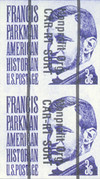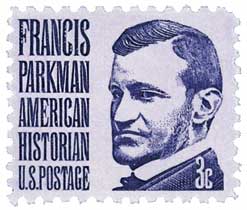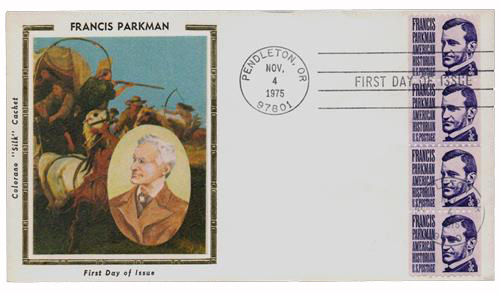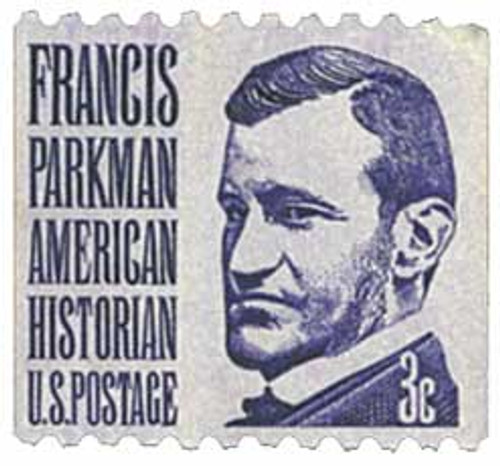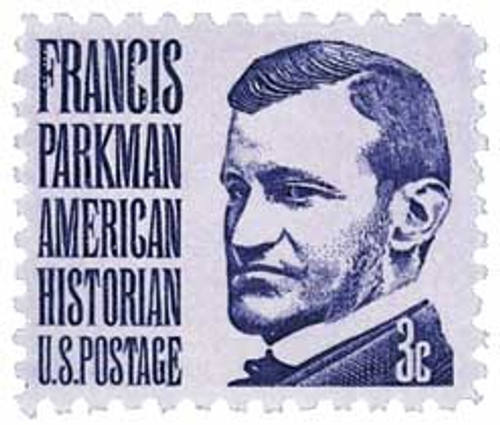
# 1297c - 1975 3c Francis Parkman, Error
Freaks and Errors are Missing From Most Collections
Nothing adds prestige to a stamp collection like a rarity, which is why error and freak stamps are so very desirable. Even the most common freak is much scarcer than the normal version of a stamp. And true errors are rare. Some of the most-treasured stamps in the world are error stamps. Now you can have them in your collection!
A Fascinating Philatelic Specialty
Errors and freaks are stamps not prepared according to their design specifications and mistakenly released to the public. Errors are stamps which have mistakes in color, perforation or design. Freaks are stamps which show an inconsistency in their production. There are three groups of stamps listed here: misperforated freaks, imperforate errors and missing color errors.
Misperforated freaks are stamps with perforations falling within the boundaries of the stamp’s design, rather than in the margins, usually caused by simple mechanical problems. With imperforate errors the perforation stage of production is completely omitted. The presence of a single mark from perforating machinery would disqualify it as a true error. This happens rarely and usually involves human error.
FREE Normal Stamp for Comparison!
When you order freak or error stamps we’ll send you the normal versions for FREE. Place them side by side in your album. When displayed in this way the error and freak stamps make the most dramatic presentation. They’ll look impressive in your album.
Set Your Collection Apart from the Rest...
Many collectors are unfamiliar with this important field of stamp collecting. Set your collection apart from the rest!
Birth Of Francis Parkman
Born into a distinguished Boston family, Parkman was in poor health as a child and was sent to live with his grandmother in the wilderness in nearby Medford. During his time there he learned how to hunt and live like a pioneer. Living there for four years, Parkman developed a love of nature that would later inspire his career as a historian. Parkman would later say that his books covered “the history of the American forest.”
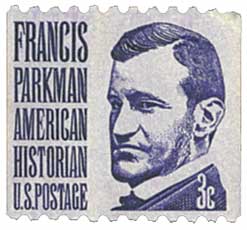
Parkman entered Harvard College when he was 16 and used his time there to develop a plan for his future as a forest historian. When he was 20, Parkman spent eight months in Europe. He explored the Alps and climbed Mount Vesuvius.
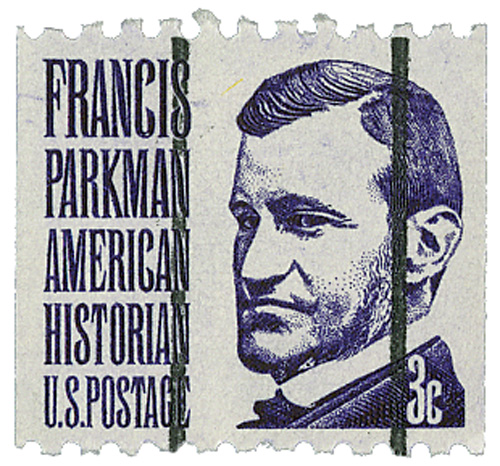
After graduating, Parkman’s father convinced him to get a law degree, in the hopes it would persuade him to abandon his plans to write about the American wilderness. At the time, writing about such a topic was taboo, with most scholars focusing on ancient history or the Spanish Empire. But even after earning his law degree, Parkman was committed to his goal.
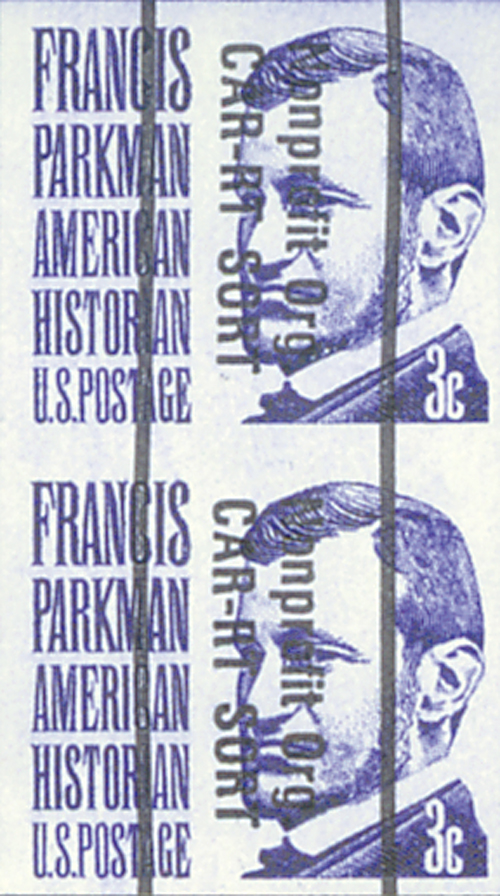
In 1846, Parkman traveled west on a hunting expedition. During that trip, he spent several weeks living with a Sioux tribe. Upon returning home Parkman recounted his trip in Knickerbocker Magazine and those stories were then collected in The California and Oregon Trail in 1849.
As he came from a wealthy family, Parkman was able to carry out his research without worrying about money until he began to receive royalties from his books. He spent a great deal of time researching and traveling across America and to Europe.
In the 1850s and 60s, Parkman became a fellow of the American Academy of Arts and Sciences and a member of the American Antiquarian Society. After the Civil War, he worked with the Boston Athenæum library to collect Confederate newspapers, broadsides, books, and pamphlets. This is one of the most extensive of such collections and has been of great use to historians.
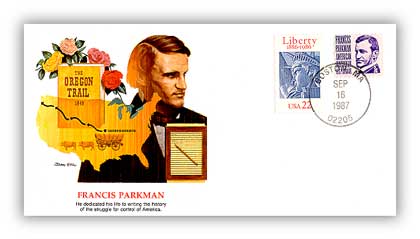
Parkman wrote many well-received books during his career, including History of the Conspiracy of Pontiac, Pioneers of France in the New World, The Jesuits in North America in the Seventeenth Century, La Salle and the Discovery of the Great West, Count Frontenac and New France Under Louis XIV, Montcalm and Wolfe, The Old Régime in Canada, A Half-Century of Conflict, and France and England in North America.
Freaks and Errors are Missing From Most Collections
Nothing adds prestige to a stamp collection like a rarity, which is why error and freak stamps are so very desirable. Even the most common freak is much scarcer than the normal version of a stamp. And true errors are rare. Some of the most-treasured stamps in the world are error stamps. Now you can have them in your collection!
A Fascinating Philatelic Specialty
Errors and freaks are stamps not prepared according to their design specifications and mistakenly released to the public. Errors are stamps which have mistakes in color, perforation or design. Freaks are stamps which show an inconsistency in their production. There are three groups of stamps listed here: misperforated freaks, imperforate errors and missing color errors.
Misperforated freaks are stamps with perforations falling within the boundaries of the stamp’s design, rather than in the margins, usually caused by simple mechanical problems. With imperforate errors the perforation stage of production is completely omitted. The presence of a single mark from perforating machinery would disqualify it as a true error. This happens rarely and usually involves human error.
FREE Normal Stamp for Comparison!
When you order freak or error stamps we’ll send you the normal versions for FREE. Place them side by side in your album. When displayed in this way the error and freak stamps make the most dramatic presentation. They’ll look impressive in your album.
Set Your Collection Apart from the Rest...
Many collectors are unfamiliar with this important field of stamp collecting. Set your collection apart from the rest!
Birth Of Francis Parkman
Born into a distinguished Boston family, Parkman was in poor health as a child and was sent to live with his grandmother in the wilderness in nearby Medford. During his time there he learned how to hunt and live like a pioneer. Living there for four years, Parkman developed a love of nature that would later inspire his career as a historian. Parkman would later say that his books covered “the history of the American forest.”

Parkman entered Harvard College when he was 16 and used his time there to develop a plan for his future as a forest historian. When he was 20, Parkman spent eight months in Europe. He explored the Alps and climbed Mount Vesuvius.

After graduating, Parkman’s father convinced him to get a law degree, in the hopes it would persuade him to abandon his plans to write about the American wilderness. At the time, writing about such a topic was taboo, with most scholars focusing on ancient history or the Spanish Empire. But even after earning his law degree, Parkman was committed to his goal.

In 1846, Parkman traveled west on a hunting expedition. During that trip, he spent several weeks living with a Sioux tribe. Upon returning home Parkman recounted his trip in Knickerbocker Magazine and those stories were then collected in The California and Oregon Trail in 1849.
As he came from a wealthy family, Parkman was able to carry out his research without worrying about money until he began to receive royalties from his books. He spent a great deal of time researching and traveling across America and to Europe.
In the 1850s and 60s, Parkman became a fellow of the American Academy of Arts and Sciences and a member of the American Antiquarian Society. After the Civil War, he worked with the Boston Athenæum library to collect Confederate newspapers, broadsides, books, and pamphlets. This is one of the most extensive of such collections and has been of great use to historians.

Parkman wrote many well-received books during his career, including History of the Conspiracy of Pontiac, Pioneers of France in the New World, The Jesuits in North America in the Seventeenth Century, La Salle and the Discovery of the Great West, Count Frontenac and New France Under Louis XIV, Montcalm and Wolfe, The Old Régime in Canada, A Half-Century of Conflict, and France and England in North America.




